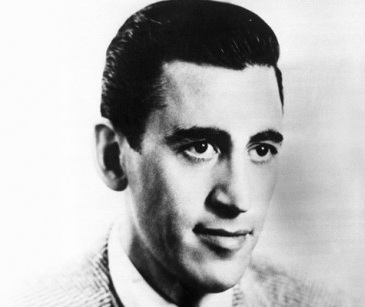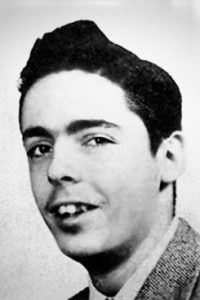Hapworth 16, 1924
J.D. Salinger
Review By Dan Geddes
10 October 2000
Note: This review was originally written as a review for the book version of “Hapworth 16, 1924,” which was announced for publication in 1997, but withdrawn at the last moment by Salinger.
See also: J.D. Salinger – In Memoriam
For many Salinger fans, securing a copy of Hapworth 16, 1924 will at first seem an exceptional boon. The book will be purchased on impulse, eagerly opened on a bus or in a nearby coffeehouse–and, despite its unusual brevity for a book, probably never finished.
Why? Because Hapworth 16, 1924 is not only Salinger’s worst post-Catcher in the Rye (1951) effort, it deserves some special award for authorial self-indulgence. The attention it generates is a result of Salinger’s infamous thirty-two-year literary silence (“Hapworth, 16, 1924,” appeared in the June 19, 1965 edition of The New Yorker), and his readers’ affection for his previous fiction, rather than the work’s merits.
Aside from a brief, chummy introduction by Buddy Glass, Salinger’s self-described “alter ego,” Hapworth 16, 1924 consists entirely of an interminable letter home from summer camp (Camp Hapworth) by seven-year-old Seymour Glass. Lest we doubt that seven-year-olds typically write 20,000 word letters, we quickly recall that this is the same Seymour Glass who entered college at 16, earned his Ph.D. at 21, and put a bullet through his brain at 31.
Of course, the bulk of Salinger’s post-Catcher writing concerns the amazingly precocious Glass family (some of the Nine Stories excepted), especially Seymour, the joyful, yet self-martyred, poet-saint. Indeed, Salinger assumes his readers possess at least a rudimentary knowledge of the Glass family, without which Hapworth becomes completely baffling, as Seymour’s preternatural powers are not explained.
Seymour Glass first appeared in “A Perfect Day for Bananafish” (1948), later collected as the first of the Nine Stories (1951). He is characterized as eccentric, intelligent, and perhaps too fond of children, but we hear nothing of his superlative spiritual powers, nor of the Glass family as such. “Bananafish” remains one of Salinger’s most famous stories largely because of the shocking power of Seymour’s suicide (there is little foreshadowing) on first reading. The story, however, apparently had an even greater impact on its writer, as Salinger spends the rest of his career treating the mystery of Seymour’s suicide, and yet fails to provide any satisfying answers.
Despite Salinger’s unhealthy fixation on Seymour, he hardly ever appears in the flesh in any of the later novellas–a symptom of Salinger’s complete degeneration into interior monologues, diary entries, and letters. In neither Raise High the Roof Beam, Carpenters (which depicts his wedding day) nor Seymour: An Introduction (a formless hagiography by Buddy) is Seymour treated as a character in any traditional sense: i.e., actually appears in scenes. Both stories in fact feature Buddy; and, eerily, it emerges that one of most salient conflicts in late Salinger is the struggle between the dead Seymour and his admiring brother Buddy–both of whom bear striking resemblances to Salinger–for primacy in the reader’s imagination.
In Hapworth the roles are somewhat reversed, as Seymour, armed with his “new and entirely trivial mastery of written construction and decent sentence formation,” writes about the wonders of young Buddy. The device of the letter gives Salinger carte blanche to address his readership without the onus of producing action, dialogue, or characterization. Free from all narrative burdens, Salinger can simply startle us with Seymour’s brilliance, as well as with his invincible faith in reincarnation; his gift of prophecy; his tolerance toward the portion of humanity not comprised of poet-saints; and perhaps, most absurdly, Seymour and Buddy’s (age 5) ludicrously precocious digestion of much of the Western canon.
Moreover, since this is young Seymour’s letter, all errors of judgment, taste, or grammar can be attributed to Seymour, who admits to be writing at a “swift, terrible rate of speed,” rather than to Salinger. Hapworth represents a complete abnegation of authorial responsibility and effort. As the “story” wears on, with only an occasional witticism to keep the reader going, Seymour writes: “Please, please, PLEASE do not grow impatient and ice cold to this letter because of its gathering length”–and we wonder whether he is addressing his family or us.
But what does Seymour write about at such length? In affected, adjective-heavy Salingerese, Seymour describes his lust for Mrs. Happy, a 22-year-old camp counsellor (“…perfect legs, ankles, saucy bosoms, very fresh, cute hind quarters, and remarkable little feet….”); Buddy’s lifelong desire to write, already well in evidence (“He has written 6 new stories, entirely humorous in places….”); Buddy’s successful wager with a Mr. Nelson that he could “memorize [sic] the book Mr. Nelson chanced to be reading [Hardwoods of North America] within the space of twenty minutes to a half hour”; Seymour’s prophecy of his own death after the age of 30 (Teddy from Nine Stories also predicts his own death); Seymour’s accidental wounding of his own leg, and his obliviousness to pain (“I was offered a touch of anesthesia, which I politely declined”); his advice to his mother to breathe through her left nostril as much as possible; and Seymour’s memorable request for books.
Seymour wants his librarian to send him a staggering catalog of literature, his running commentary of the works providing most of the unintentional humor, and perhaps 25% of the entire content, of the story. A small sampling of Seymour’s book list would include: Conversational Italian; any “unbigoted or bigoted books on God or merely religion, as written by persons whose last names begin with any letter after H”; “the complete works again of Count Leo Tolstoy”; Don Quixote; the works of Charles Dickens, George Eliot, William Makepeace Thackeray, Jane Austen, John Bunyon (as Seymour “did not give this man a fair chance when [he] was younger”); the Bronte sisters; Chinese Materia Medica; plus “in fairly large amounts…books by Victor Hugo, Gustave Flaubert, Honore de Balzac, Guy de Maupassant, Anatole France” (all in the original French); as well as Marcel Proust (“Buddy has not yet had the onslaught of meeting this uncomfortable, devastating genius…but is now swiftly approaching readiness, his tender age quite aside”); all of Arthur Conan Doyle (whom Seymour hesistantly admits he prefers to “the great Goethe”); books by Otakar Brezina, Seymour’s librarian’s favorite Czech poet, whom Seymour regrets he must read in translation; as well as many other books, including a few “invaluably stupid books” on Alexander the Great which Seymour “would like Buddy to have under his belt before entering school next year….”[!]
At this point, near the end of the letter, we almost hope that Salinger is ribbing us, satirizing his own characters’ absurd precocity. But, alas, Salinger has invested too much literary capital (half of his extant oeuvre) into Seymour’s canonization to simply obliterate the entire Glass Family mythology with an easy satire. Satirization of one’s lifework, however destructive, would at least imply a writer in control, which the writer of Hapworth clearly is not. Salinger probably realizes the absurdity of some of his claims about Seymour and Buddy, but beginning with “Teddy,” Salinger has emphasized the unusual powers of his precocious mystics. His adoption of mysticism enabled him to critique society–especially psychologists, academics (other than Seymour), and even the enterprise of writing–from a God’s-eye-view. The Catcher in The Rye, featuring Holden Caulfied’s human-all-too-human societal critique, remains a far stronger work than the essentially fantastic Glass Family mythology.
Despite the dissension of the literary critics, the prospect of Hapworth the book is already creating a stir among Salinger’s ready-made, largely youthful, audience, their appetites whetted all the more by delays in the book’s publication. For others of us, once equally fervent Salinger fans, we can simply review our old photocopies of the June 19, 1965 New Yorker, made at the height of our infatuation with Salinger’s prose, when we too dreamed of being precocious Glasses, cocooned in a family of loving egos, safe from the horrors of non-Glass humanity.
Note: This review was written from a re-reading of the old New Yorker story; as of this writing, the book has not appeared.
See also: J.D. Salinger – In Memoriam









Be First to Comment